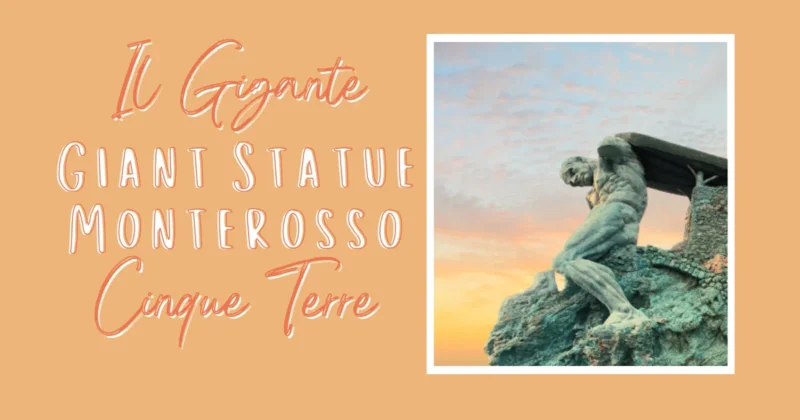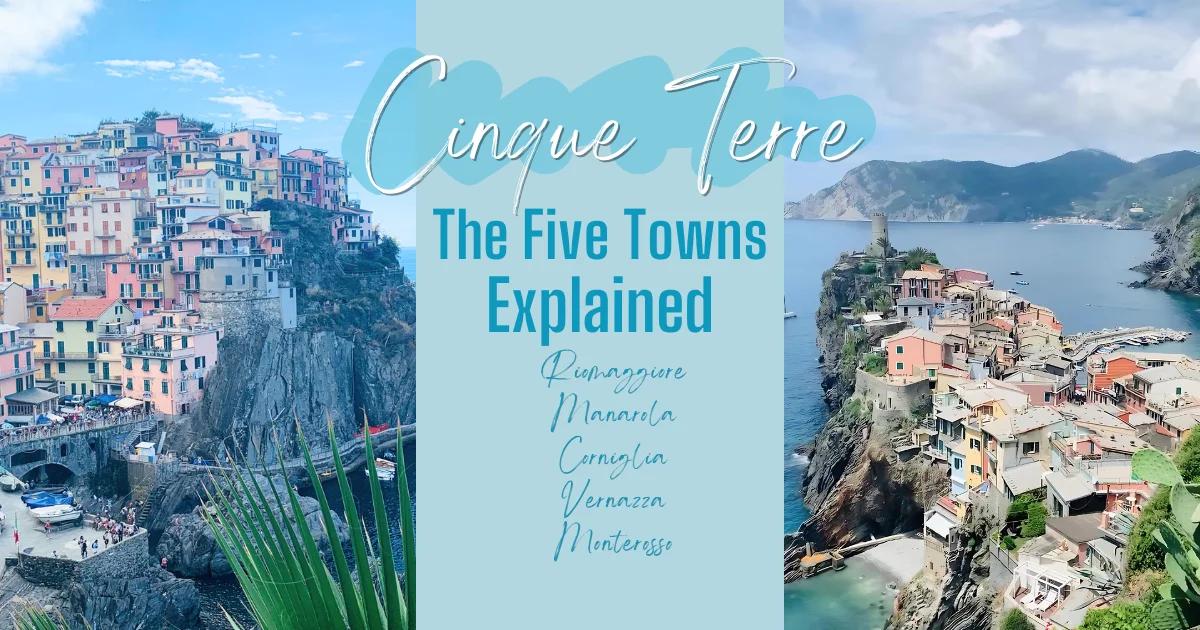Visitors to Monterosso, Cinque Terre have the pleasure of experiencing both an old and new town. For a sample of some recent history. Go to the far western end of Fegina Beach in Monterosso and you’ll see the unusual monument known as il Gigante (The Giant).
The 14-meter-high il Gigante stands guard over Monterosso and is an intriguing site for Cinque Terre tourists.
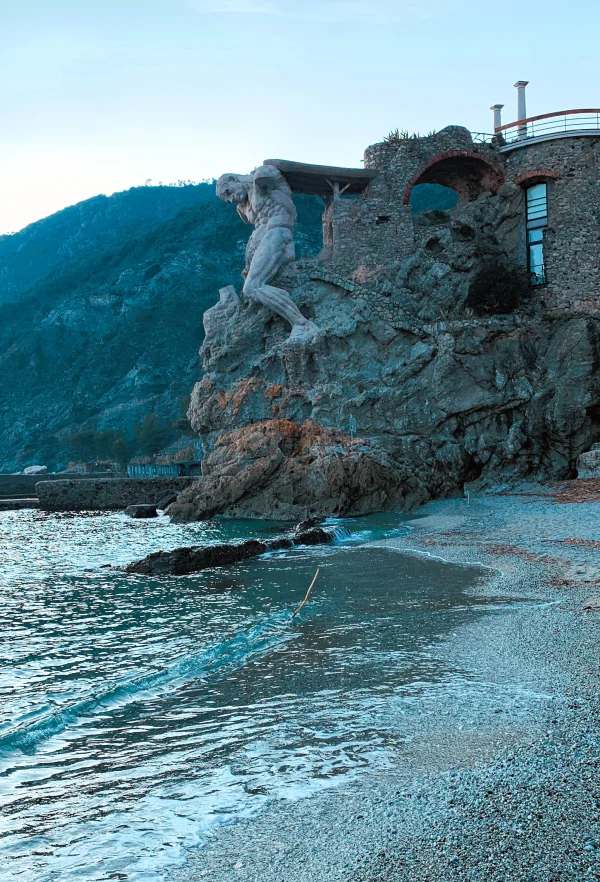
During our first visit to Cinque terre in 2019, unfortunately (or maybe fortunately), the statue was completely encased with scaffolding to secure and protect it from further damage. I’ll be honest, the construction works meant we paid NO attention to il Gigante.
But in recent times I’ve become interested (Ok! Maybe I’m even a little bit obsessed) with this quirky sculpture. I’m not a history buff but let’s say, I like to dabble. I make an effort to understand a place, its history, culture, and people. It adds a texture that is important to me when I travel.
Even though il Gigante is no statue of David, it does have an interesting and controversial history. So, here’s what I’ve pieced together about il Gigante.
What is il Gigante
The Giant Statue depicts Neptune. The statue originally included Neptune’s trident and an enormous conch shell that rested atop his shoulders.
In Roman mythology, Neptune is known to be the god of the sea. A fitting deity to preside over Monterosso that has its history, culture, and prosperity entwined with the sea.
Maybe because it’s a monument of a Roman god, or maybe because of its size, il Gigante summons up ideas of the ancient wonders of the world and in particular the Colossus of Rhodes.
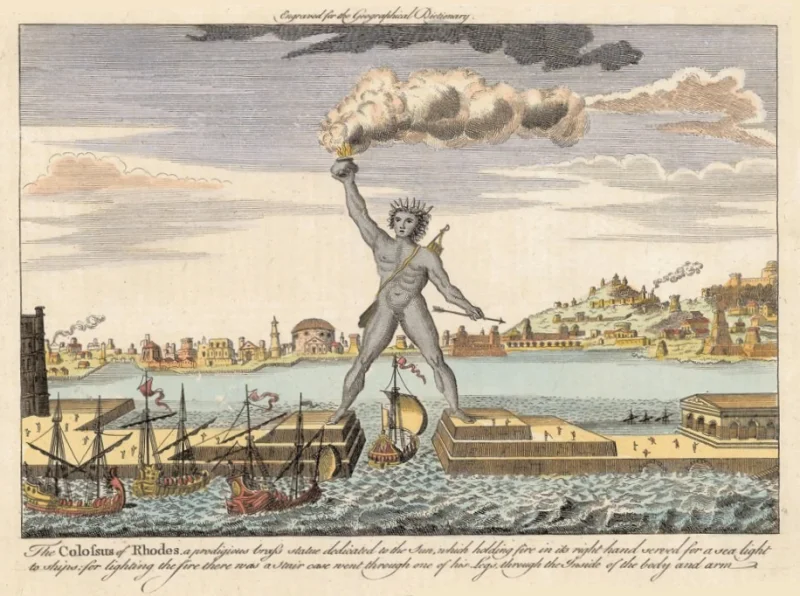
Image Credit: Nathan Hughes Hamilton. Some rights reserved
Like the Colossus of Rhodes, il Gigante is positioned in a prominent coastal position and has suffered significant destruction.
But unlike the ancient wonders, the Giant Statue is a modern relic of a little over a century old.
Who Designed and Sculpted il Gigante
Il Gigante was designed and built by Italian Jewish artist, Arrigo Minerbi, known for works in several cathedrals and for his bronze door on the Duomo in Milan.
Who was Neptune
You can imagine Neptune as the boss of the ocean. He was depicted as immensely powerful and with his trident (a three-pronged spear) he could cause earthquakes and tidal waves.
Neptune was also associated with horses, and you might recognize him in art that depicts him riding a majestic seahorse.
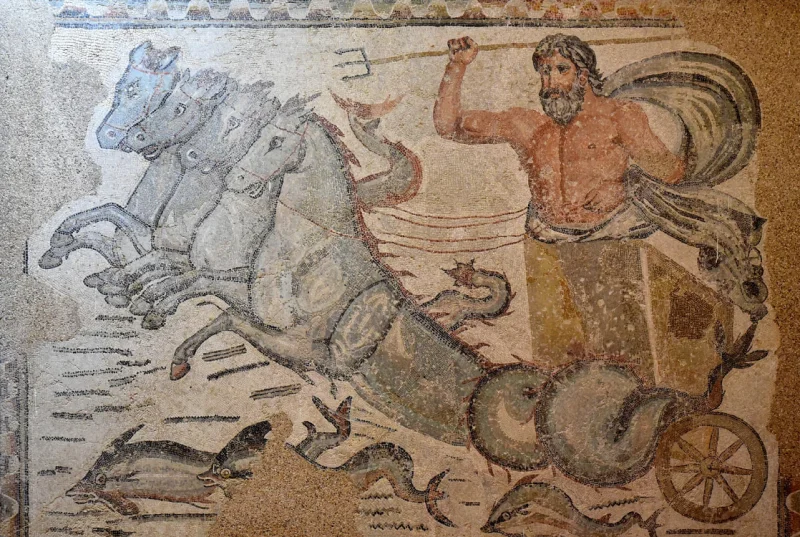
Image Credit: www.worldhistory.org
What is the History of The Giant Statue
Originally sculpted in 1910 from concrete (…I didn’t know that was a thing?), the Giant Statue adorned a coastal position below Punta Mesco and the lavish Villa Pastine.
Villa Pastine, Monterosso
Villa Pastine was owned by a wealthy local lawyer Giovanni Pastine. Towards the end of the 19th century, he built Villa Pastine as a luxury residence for his family.
The villa was designed by the famous architect Rolando Levacher on the site where an earlier house stood (Casa dei Doganieri).
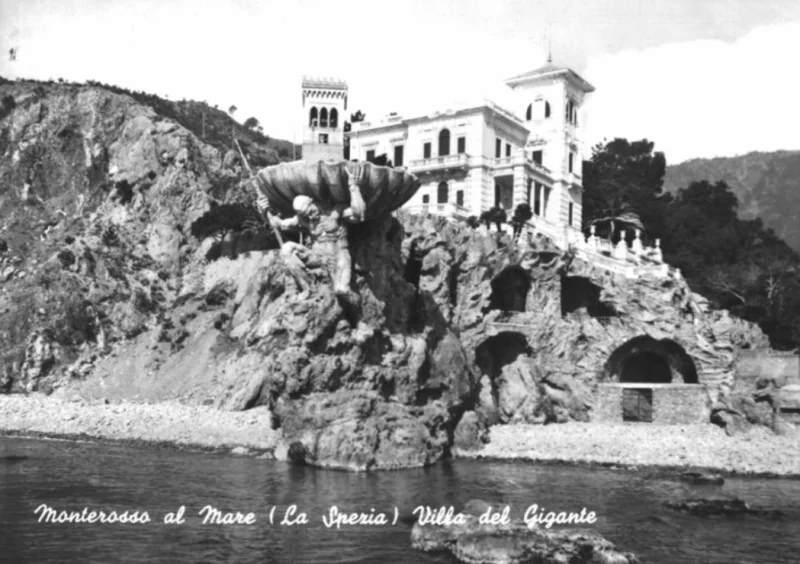
Photo credit: Spezzino Vero
Villa Pastine During WW2
I was surprised by how the history of il Gigante and Villa Pastine has become so blurry. It was only after spending several hours digging around on local forums and Facebook groups that I started to uncover some reliable accounts from local Monterosso residents.
There seems to be much controversy about the villa. In fact, it took me a little time to unravel the various contradictory accounts of the Villa Pastine and il Gigante.
I could find a consistent story of the villa becoming a local German Nazi command office during the WWII. During Allied attacks, it’s said that the villa was bombed. Other locals have also added to the story by confirming that the villa was still standing after the war but was finally (almost completely) demolished by the owners in the mid-1960s.
How Was il Gigante Damaged?
There are also some strange ambiguities about il Gigante and its history. Reading about il Gigante in various other blogs is like a game of Chinese whispers.
One of the weirdest stories that seems to be falsely repeated in numerous places is that il Gigante was originally attached to Villa Pastine and after being bombed during WW2, the statue was physically moved (!!) to its current location. I found no evidence of this being true!
What seems most likely to be true is that il Gigante was damaged during WW2, and then suffered further erosion from coastal storms over the years.
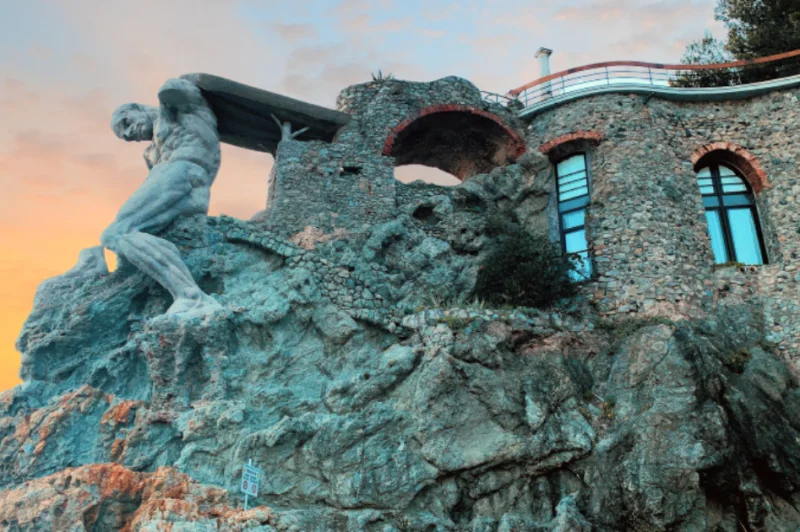
The most tantalizing and interesting thing that I read about il Gigante and Villa Pastine, is that the Giant’s conch shell was in fact a terrace and on summer evenings there would be dances held inside the shell. How fabulous that must have been!
Experiencing il Gigante Today
Whatever happened; when you visit il Gigante today, you’ll see that sadly he is missing both arms, a leg, his trident, and the seashell that he originally held aloft his head and neck.
Today you can experience il Gigante up close and personal by staying in the luxury apartment (La Casa del Gigante Luxury) built into the rock supporting the statue!
But, there are other more affordable places to stay in Monterosso.
Visiting Monterosso
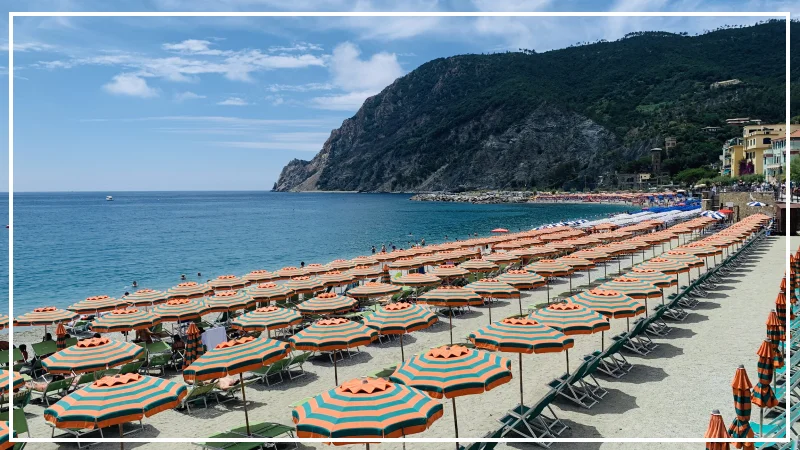
- The train is a great option and runs frequently between La Spezia and Levanto. Stopping at all Cinque Terre towns.
- Local ferries run from late spring to early autumn.
- We visited in autumn and went by car. Out of the main tourist season, it’s easy to find parking in Monterosso.
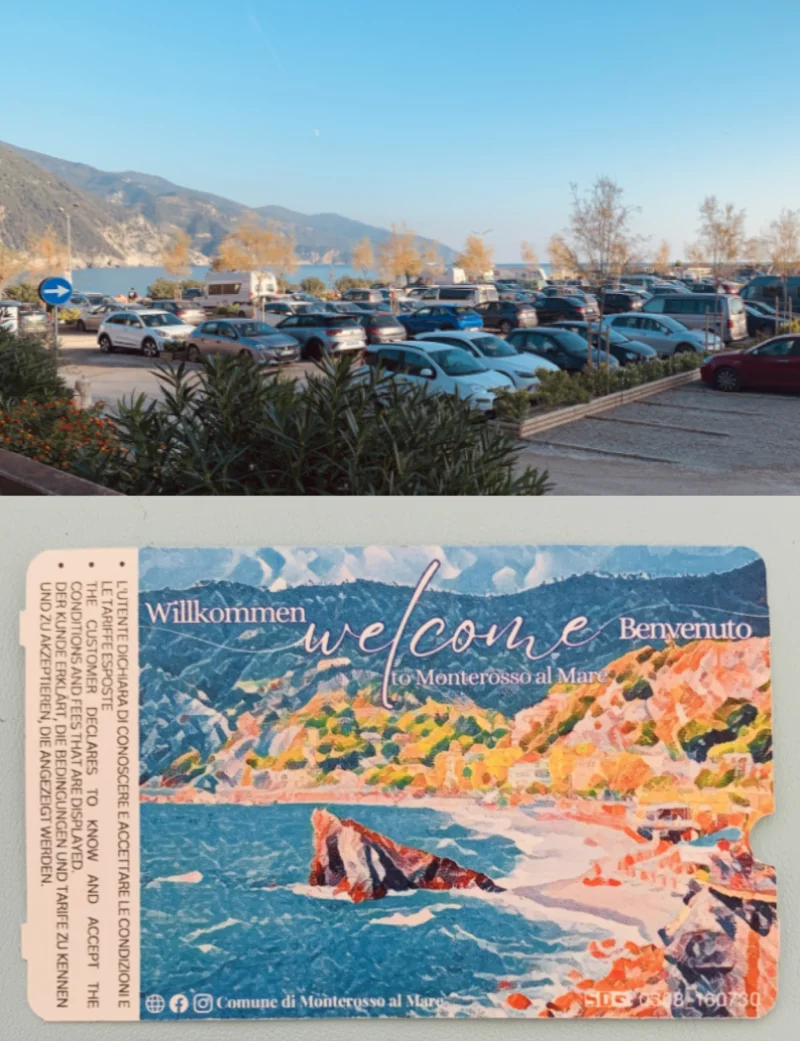
Related Content:
How to Find More Information on Il Gigante
In case you have further interest, the best historical account I’ve been able to track down was in this detailed article by Marisa Uberti.
Wrap Up
We love to share our local knowledge and hope when you visit Monterosso and il Gigante for yourself, you’ll be able to see and appreciate it with more interest!
Our blog brings Cinque Terre and the Ligurian Riviera to life. Making your holiday planning easier and your time here more enjoyable. Feel free to explore more of our content!

